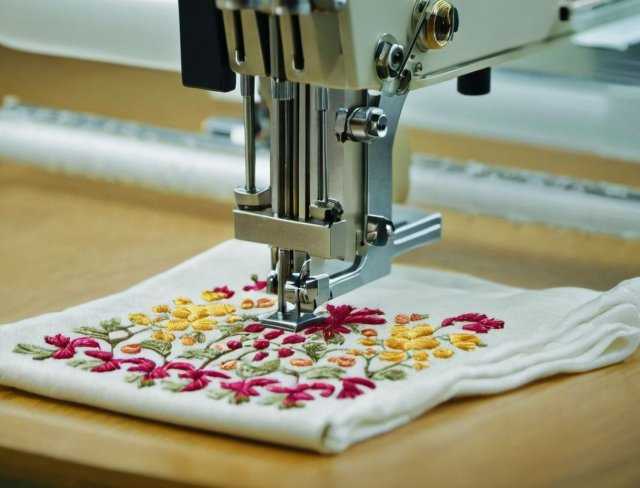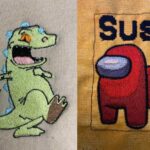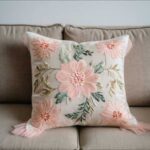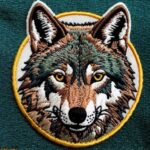Set Your Stitching Free
A Beginner's Guide to Free Motion Embroidery
Introduction
Welcome to the world of Free Motion Embroidery (FME), where stitches transform fabric into canvases of creativity and expression. This article delves into the artistry of FME, exploring essential techniques, equipment, and troubleshooting tips that empower artists to push the boundaries of traditional embroidery. Whether you’re a novice intrigued by thread painting or an experienced embroiderer seeking new inspirations in mixed media, FME offers a rich tapestry of possibilities.
Throughout this exploration, we’ll uncover the foundational techniques that define FME’s artistic potential. From mastering intricate designs through appliqué and quilting to troubleshooting common challenges like thread breakage and uneven stitching, each aspect of FME invites artists to refine their skills and expand their artistic horizons.
Join us as we embark on a journey of creativity and discovery in Free Motion Embroidery. Whether you’re seeking practical guidance or artistic inspiration, this article aims to equip you with the knowledge and confidence to explore, innovate, and create meaningful works of art through the magic of stitches and threads.
What is Free Motion Embroidery?
Free Motion Embroidery (FME) stands out as a dynamic and versatile technique within the realm of textile arts. Unlike traditional embroidery methods that rely on preprogrammed patterns or computerized designs, FME empowers the artist to wield their sewing and/or embroidery machine like a paintbrush, creating intricate and personalized designs with fluidity and precision.
At its core, Free Motion Embroidery liberates the artist from the constraints of rigid stitching patterns. By lowering or covering the feed dogs of the sewing and/or embroidery machine, those mechanisms that typically guide fabric in a straight line, crafters gain unprecedented control over the movement of the fabric. This manual approach allows for free form stitching, where the fabric can be guided in any direction under the needle.
Imagine sketching on fabric with a sewing and/or embroidery machine, this is the essence of Free Motion Embroidery. The needle becomes your pencil, and the thread your ink, enabling you to create lines, shapes, and textures directly onto the fabric’s surface. Whether you’re crafting intricate floral motifs, geometric patterns, or whimsical illustrations, each stitch is a brushstroke that adds depth and character to your artwork.
One of the most appealing aspects of Free Motion Embroidery is its versatility. It can be applied to a wide range of projects, including quilting, garment embellishment, home decor items like pillows and wall hangings, and even mixed media artworks. This adaptability makes FME a favorite among textile artists seeking to add a unique touch to their creations.
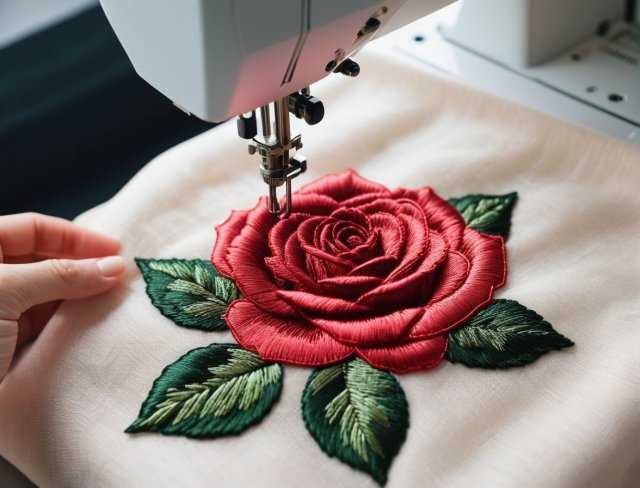
FME allows for spontaneous creativity and artistic expression. You are not limited by predefined patterns, enabling you to explore and innovate with every stitch. Each piece created with Free Motion Embroidery is inherently unique. Whether you’re customizing clothing, creating personalized gifts, or designing “one of a kind” art pieces, FME ensures that your creations stand out.
Unlike traditional embroidery methods where machines dictate the design, FME puts the artist in full control. The ability to manipulate the fabric and thread enables precise detailing and intricate designs. While Free Motion Embroidery certainly enhances the aesthetic appeal of textiles, it also transcends functional embellishment.
It serves as a medium for storytelling and self expression, where each stitch carries meaning and intention. Whether you’re capturing a moment in nature, depicting abstract concepts, or conveying emotions through thread, FME transforms fabric into a canvas for artistic narrative.
Mastering Free Motion Embroidery requires practice, patience, and a willingness to experiment. As you gain proficiency, you’ll develop a sense of rhythm and control over your stitches, allowing you to tackle more complex designs and techniques. Each project becomes an opportunity for growth and refinement, honing your skills as a textile artist.
Free Motion Embroidery is not just a technique, it’s an art form that empowers artists to push the boundaries of traditional stitching. Whether you’re new to embroidery or looking to expand your creative horizons, FME offers a pathway to explore your artistic potential. Embrace the freedom, unleash your creativity, and discover the endless possibilities of Free Motion Embroidery.
Should This Be Your Goto Method?
Free Motion Embroidery (FME) offers a compelling array of reasons for artists and crafters to embrace its unique approach. Unlike traditional embroidery techniques that rely on preset patterns and mechanized precision, FME empowers creators with unparalleled artistic freedom. Imagine using your sewing and/or embroidery machine not as a tool of replication, but as a brush to paint with thread. This method allows for spontaneity and creativity in design, where every stitch becomes a stroke of personal expression. Whether you’re a beginner venturing into textile artistry or an experienced embroiderer seeking new avenues of creativity, FME opens doors to limitless possibilities.
One of the standout advantages of FME is its capacity for personalization. Each piece crafted through Free Motion Embroidery is inherently unique, reflecting the artist’s style and vision. This technique enables the customization of clothing, accessories, and home decor items with intricate, hand drawn designs that stand out from mass produced alternatives. The ability to manipulate the fabric and thread manually provides a tactile connection to the creative process, enhancing the satisfaction of seeing a design come to life stitch by stitch.
Beyond its aesthetic benefits, Free Motion Embroidery offers practical advantages in versatility and adaptability. Artists can apply FME to a wide range of projects, from quilting and garment embellishment to mixed media artworks. This flexibility makes it a valuable tool for exploring different textures, layering techniques, and dimensional effects in art and craft projects. Moreover, FME encourages experimentation and innovation, allowing artists to push the boundaries of traditional stitching techniques and explore new artistic horizons.
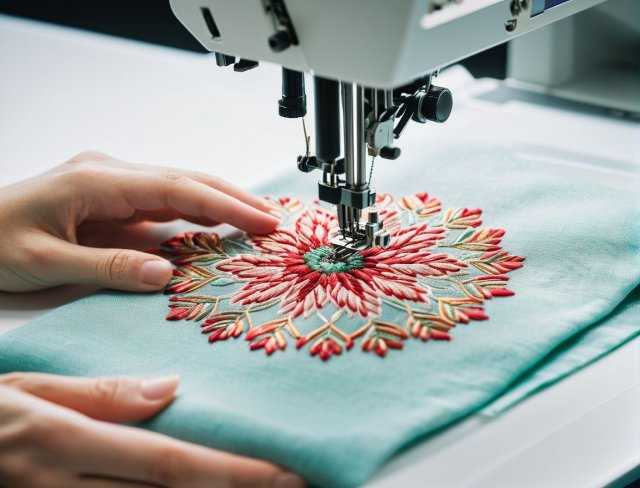
Another compelling reason to choose Free Motion Embroidery is its educational value and skill building potential. Mastering FME requires practice and patience, fostering a deeper understanding of machine operation, fabric behavior, and stitch manipulation. As artists refine their technique, they develop a keen eye for detail, honing their ability to execute complex designs with precision and finesse. This continuous learning process not only enhances craftsmanship but also cultivates a sense of accomplishment and personal growth in artistic endeavors.
In essence, Free Motion Embroidery is more than just a technique, it’s a gateway to artistic expression and creative fulfillment. Whether you’re drawn to its artistic freedom, personalized touch, versatility, or skill building opportunities, FME offers a rich tapestry of benefits for artists and crafters alike. By embracing Free Motion Embroidery, you embark on a journey of exploration and discovery, where each stitch becomes a brushstroke in your unique artistic narrative.
Getting Started with Free Motion Embroidery
Before venturing into the creative possibilities of Free Motion Embroidery (FME), it’s essential to familiarize yourself with the foundational techniques and equipment. Setting up your workspace and understanding the basic mechanics of your sewing and/or embroidery machine are crucial initial steps. Once you’re comfortable with the essentials, you can begin to explore the limitless potential of FME to bring your artistic visions to life.
• Equipment You Need
To embark on your Free Motion Embroidery (FME) journey, ensure you have the following essential tools:
1. Sewing and/or Embroidery machine: Your choice of machine for FME should ideally feature the capability to lower or cover the feed dogs. These are the mechanisms that typically move the fabric forward in a straight line during regular sewing. By disabling or covering the feed dogs, you gain the freedom to manually guide the fabric in any direction under the needle. This flexibility is crucial for executing intricate designs and patterns with ease and precision.
Additionally, attaching an Embroidery Foot (also known as a darning foot) to your machine is essential. The embroidery foot allows for better visibility and control over your stitching. Its smooth, flat sole prevents snagging on the fabric and facilitates smooth movement, especially around curves and tight corners. This combination of a suitable sewing and/or embroidery machine and embroidery foot forms the foundation for successful Free Motion Embroidery.
2. Stabilizers: Stabilizers play a pivotal role in ensuring the quality and durability of your FME projects. These materials provide temporary support to the fabric during stitching, preventing it from stretching, puckering, or distorting under the needle. There are various types of stabilizers available, each suited to different fabrics and project requirements.
Tear away stabilizers are suitable for lightweight fabrics and can be easily removed by tearing once the embroidery is complete. Cut away stabilizers are more robust and are trimmed away from the fabric after stitching, offering long term support for heavier fabrics or dense embroidery designs. Wash away stabilizers dissolve in water, leaving behind a clean finish and are ideal for delicate fabrics or intricate designs where the stabilizer needs to be entirely removed. Choosing the right stabilizer ensures that your FME projects remain smooth and professional looking, enhancing the quality and longevity of your embroidered designs.
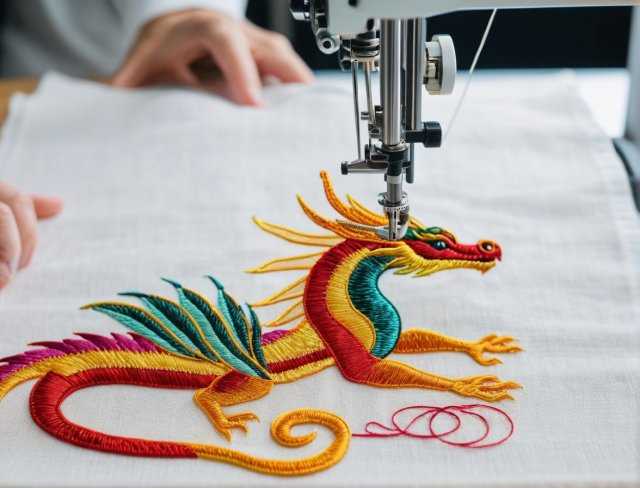
3. Needles and Threads: Selecting the appropriate needles and threads is crucial for achieving excellent results in Free Motion Embroidery. Embroidery needles are designed with a larger eye and a sharp point, allowing them to accommodate thicker threads without damaging the fabric. The larger eye also reduces friction, preventing thread breakage and ensuring smooth stitching.
When choosing threads, opt for high quality embroidery threads available in various colors, weights, and textures. Polyester and rayon threads are popular choices for their vibrant colors and silky sheen, while cotton threads offer a matte finish and natural aesthetic. Experimenting with different thread weights and types can produce varied effects, enhancing the visual appeal and texture of your embroidered artwork. By selecting the right needles and threads for your project, you can achieve precise stitching and vibrant designs that showcase your creativity and attention to detail.
• Practice Makes Perfect
Engaging in regular practice is essential to mastering Free Motion Embroidery (FME) techniques. Start by familiarizing yourself with the movement of the fabric under the needle. Begin with simple shapes and lines on scrap fabric to develop a feel for controlling the sewing and/or embroidery machine without the feed dogs engaged.
This initial practice helps you understand how fabric tension, speed, and machine settings influence stitch quality and overall design. As you gain confidence, gradually progress to more complex patterns and motifs. Experiment with different thread types, colors, and textures to discover their impact on your designs. Don’t be discouraged by initial imperfections, each practice session enhances your skills and builds muscle memory. Regular and deliberate practice is key to refining your technique and achieving consistent, high quality results in your Free Motion Embroidery projects.
Techniques to Master
Free Motion Embroidery (FME) offers a rich tapestry of techniques that empower artists to create intricate and visually compelling designs. These techniques not only enhance the aesthetic appeal of textile art but also allow for personal expression and creativity. Here are several key techniques to explore and master in FME:
Thread Painting: Thread painting is akin to using threads as paintbrushes on fabric. Artists use threads of varying colors and shades to create detailed, painterly effects such as shading, blending, and highlighting. This technique allows for the creation of realistic images, intricate textures, and nuanced details. By layering threads and adjusting stitch density, artists can achieve depth and dimension in their artworks, making thread painting a versatile and expressive form of FME.
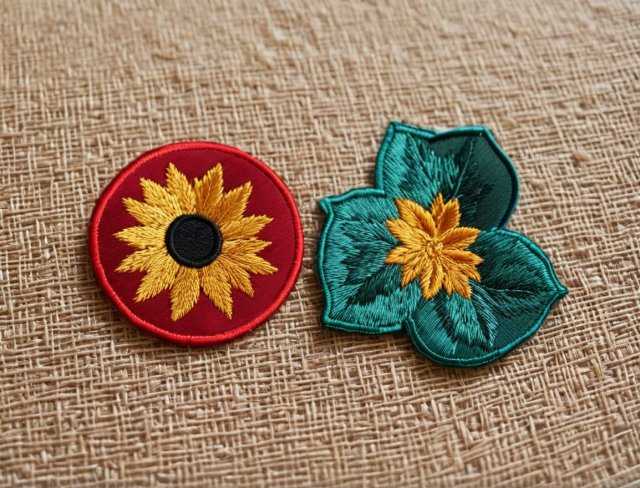
Appliqué and Fabric Collage: Incorporating appliqué and fabric collage into FME introduces texture and dimensionality to designs. Appliqué involves attaching fabric pieces onto a base fabric using FME stitches, allowing artists to create bold shapes, intricate patterns, and layered compositions. Fabric collage, on the other hand, encourages artistic freedom by combining various fabrics, textures, and patterns to form cohesive designs. This technique is ideal for creating abstract artworks or depicting detailed scenes through a patchwork of fabrics and stitches.
Quilting: FME enhances quilting by adding decorative stitching and intricate designs to quilt blocks, borders, and entire quilts. Quilting stitches in FME can range from traditional patterns to free form designs, providing flexibility in embellishing quilts with unique motifs and textures. This technique not only enhances the visual appeal of quilts but also strengthens their structural integrity, making them functional and artistic pieces that showcase meticulous craftsmanship.
Mixed Media: Combining FME with other artistic mediums such as beads, sequins, and fabric paints expands creative possibilities. Mixed media techniques allow artists to integrate diverse materials and textures into their FME projects, creating multidimensional artworks that blend embroidery stitches with tactile elements. By experimenting with different materials, artists can add depth, sparkle, and additional visual interest to their creations, transforming fabric into dynamic and expressive artworks.
Mastering these techniques requires dedication, practice, and a willingness to experiment. Start by mastering the foundational skills of each technique, understanding how materials interact and techniques can be combined to create unique effects. As you gain proficiency, explore new possibilities and push the boundaries of traditional stitching to develop your artistic voice in Free Motion Embroidery. Embrace the creative freedom that FME offers, and let your imagination soar as you transform fabric into personalized works of art that inspire and captivate viewers.
Design Tips for Beginners
Designing in Free Motion Embroidery (FME) is a blend of creativity and technical skill, offering endless possibilities for artistic expression. For beginners, starting with simple designs focused on basic shapes and patterns is highly recommended. This approach allows you to familiarize yourself with the movement of fabric under the needle and the control of your sewing machine. It’s a great way to build confidence and gain a solid foundation in FME techniques before progressing to more complex designs.
When selecting thread colors for your embroidery, consider using contrasting hues that complement your chosen fabric. Contrasting colors not only enhance visibility but also add depth and dimension to your stitched artwork. Experiment with different thread weights and textures to see how they interact with your fabric, creating unique effects that can elevate your designs.
Before diving into stitching, take the time to plan your composition. Sketching out your design on paper or digitally can help you visualize the placement of elements, achieve balance, and ensure overall aesthetic harmony in your embroidery. Planning ahead allows you to refine your design and make adjustments before you start stitching, resulting in a more cohesive and polished final piece.
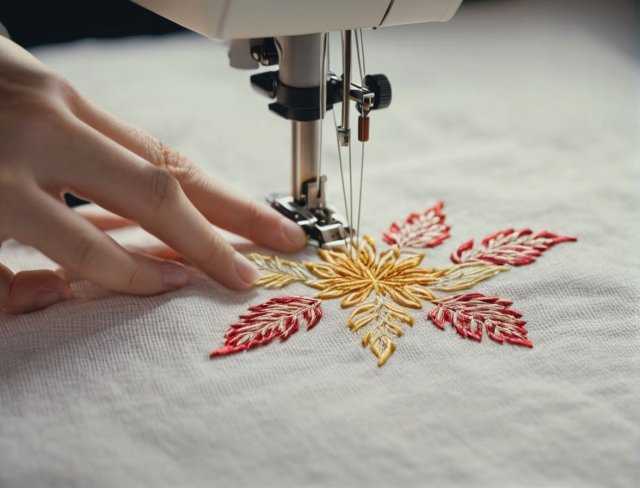
Texture plays a crucial role in Free Motion Embroidery. Explore various stitching techniques such as satin stitches, running stitches, and fill stitches to add texture and visual interest to your designs. Varying stitch lengths and densities can create different effects, from delicate details to bold textures. Don’t hesitate to experiment with layering techniques like appliqué, where additional fabric pieces are stitched onto your base fabric to create depth and dimension. Appliqué allows you to introduce new colors, patterns, and textures into your embroidery, making your artwork more dynamic and engaging.
Incorporating negative space into your design is another effective way to enhance your embroidery. Negative space refers to the areas of fabric left unstitched, which can create contrast and highlight the stitched elements of your design. Embrace the balance between stitched and unstitched areas to guide the viewer’s eye and emphasize the focal points of your artwork.
Personalization is key to making your embroidery pieces unique and meaningful. Consider incorporating elements that reflect your personal style, interests, or stories you want to tell through your artwork. Whether it’s using favorite colors, incorporating motifs that hold personal significance, or exploring themes that inspire you, adding a personal touch to your designs will make your embroidery more authentic and expressive.
Drawing inspiration from various sources can ignite your creativity and expand your design repertoire. Look to nature, art, architecture, or even everyday objects for ideas and motifs that resonate with you. Study the work of other embroiderers to observe how they use stitches, colors, and composition to evoke emotions and convey narratives through their artwork. Analyzing and learning from others’ techniques can provide insights and inspiration for your own embroidery projects.
Lastly, embrace imperfections as part of the creative process. Embroidery, like any art form, involves experimentation and learning from mistakes. Don’t be afraid to try new techniques or techniques that challenge you. Each piece you create is an opportunity to grow as an artist and refine your skills. Enjoy the journey of exploring Free Motion Embroidery, and let your creativity guide you as you develop your unique artistic voice through stitches and threads.
Troubleshooting Common Issues
Free Motion Embroidery (FME) can sometimes present challenges, but understanding common issues and their solutions can help you achieve better results. Here are some typical problems you may encounter and how to troubleshoot them:
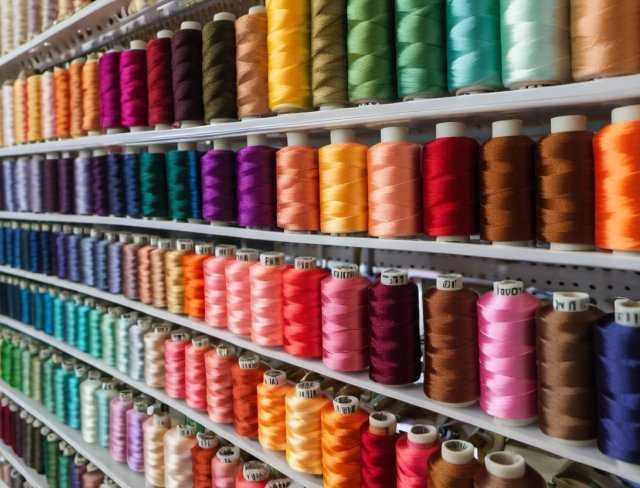
Thread Breakage: One of the most common issues in FME is thread breakage. This can occur due to several reasons, such as using the wrong needle size or thread tension, or threading the machine incorrectly. To resolve this, ensure you’re using an appropriate needle size for your thread and fabric. Adjust the tension settings on your sewing and/or embroidery machine, ensuring they are balanced for the thread you’re using. Also, double check the threading of your machine to ensure smooth thread flow.
Fabric Puckering: Puckering happens when the fabric gathers or wrinkles during stitching, detracting from the smoothness of your design. It can be caused by using the wrong stabilizer or not securing the fabric properly. Use the correct type of stabilizer, such as tear away, cut away, or wash away, based on your fabric and project requirements. Ensure the fabric is taut and well supported, avoiding excessive movement that can lead to puckering.
Uneven Stitching: Uneven stitching can result from inconsistent machine speed or uneven fabric movement. To achieve even stitches, maintain a steady pace with your sewing and/or embroidery machine, matching the speed of your hand movements to the machine’s capabilities. Practice controlling the fabric’s movement smoothly and evenly under the needle, adjusting your technique as needed to achieve consistent stitch lengths and spacing.
Needle Breakage or Bending: If your needle breaks or bends frequently, it may be due to using the wrong needle type or size for your fabric thickness or failing to replace dull or damaged needles. Choose needles designed for embroidery or use a size appropriate for your fabric. Replace needles regularly to ensure they remain sharp and capable of piercing through fabric and stabilizers without resistance.
Bobbin Issues: Problems with the bobbin, such as uneven tension or thread jams, can affect stitch quality in FME. Ensure the bobbin is wound properly and inserted correctly into the bobbin case. Adjust the bobbin tension if necessary, following your sewing and/or embroidery machine manufacturer’s instructions. Keep the bobbin area clean and free of lint buildup to prevent thread jams and ensure smooth operation.
Machine Skips Stitches: If your machine skips stitches during FME, it may be due to several factors, including incorrect needle insertion, improper tension settings, or a dull needle. Ensure the needle is securely inserted into the needle holder, with the flat side facing the correct direction. Check and adjust the tension settings according to your thread and fabric requirements. Replace the needle if it’s dull or damaged, as a sharp needle is essential for consistent stitching.
By understanding these common issues and implementing troubleshooting steps, you can overcome challenges in Free Motion Embroidery and achieve professional quality results. Practice and patience are key to mastering these techniques, so don’t hesitate to experiment with different settings and techniques to find what works best for your projects.
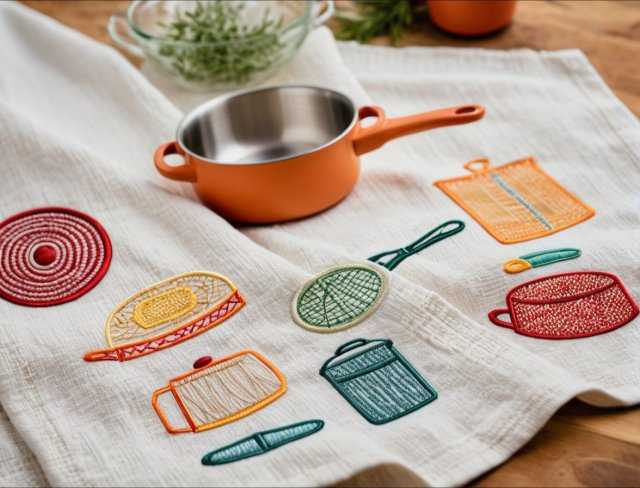
Conclusion
Free Motion Embroidery (FME) transcends mere technique, it’s a journey of creative discovery and expression. This article has explored essential techniques like thread painting and appliqué, the foundational equipment needed, and the boundless creative avenues FME opens. Whether you’re mastering intricate designs or troubleshooting common issues like thread breakage and fabric puckering, FME invites artists to push boundaries and transform fabric into personalized works of art.
Embracing FME demands dedication and experimentation. It’s about finding your artistic voice through each stitch, conveying stories and emotions in every design. Whether you’re new to textile art or a seasoned embroiderer seeking fresh challenges, FME offers limitless opportunities for creativity and self expression. With practice and perseverance, you’ll refine your skills and create artworks that inspire and captivate.
Celebrate the joy of creating with Free Motion Embroidery. Each project is a canvas for your imagination, reflecting your unique style and vision. Explore new techniques, experiment with mixed media, and overcome challenges to grow as an artist. Through patience and passion, Free Motion Embroidery empowers you to craft meaningful pieces that resonate with beauty and artistry.
Now that you have read through this article, feel free to SHOP for products we have created. If you are looking for something special which isn’t in our store, feel free to contact us.

